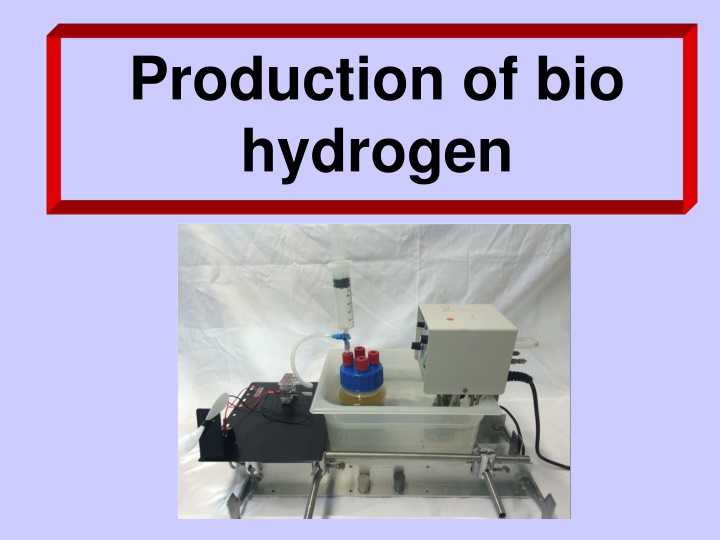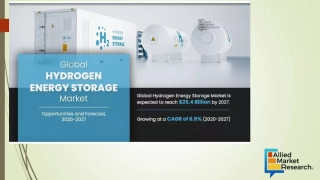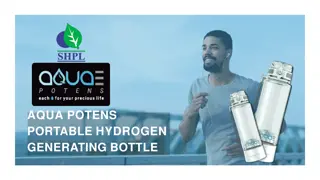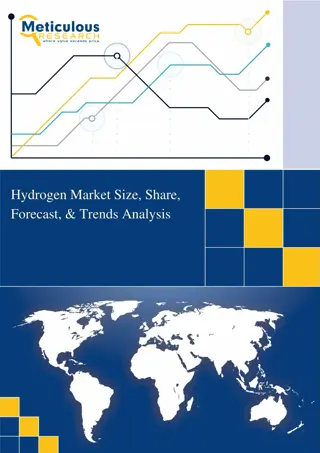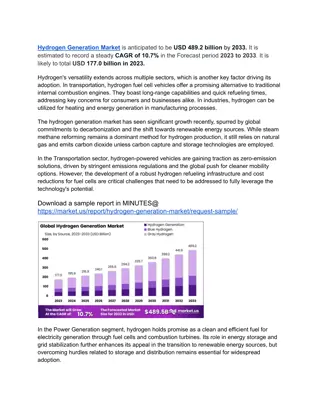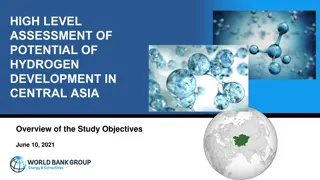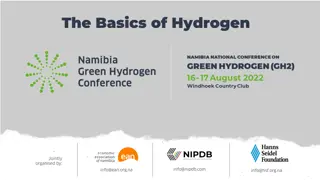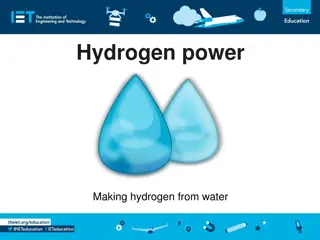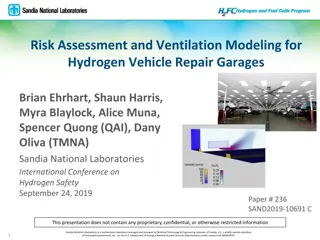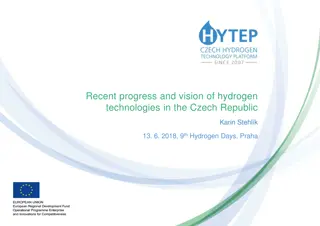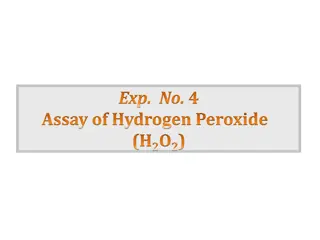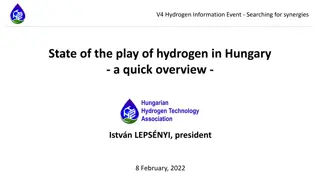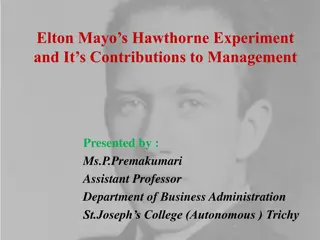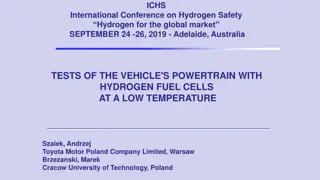Bio Hydrogen Production Experiment: Materials, Set-Up, and Procedure
This experiment focuses on the production of bio hydrogen using sugar beet cuttings and dried cultures as substrates. The materials required include a bioreactor, fuel cell, and various components for setting up the experiment. The experimental set-up involves preparing the fermentation bottle, substrate weighing, and initiating the fermentation process with hot water. Observations and results are recorded to evaluate the bio hydrogen production process.
Download Presentation

Please find below an Image/Link to download the presentation.
The content on the website is provided AS IS for your information and personal use only. It may not be sold, licensed, or shared on other websites without obtaining consent from the author.If you encounter any issues during the download, it is possible that the publisher has removed the file from their server.
You are allowed to download the files provided on this website for personal or commercial use, subject to the condition that they are used lawfully. All files are the property of their respective owners.
The content on the website is provided AS IS for your information and personal use only. It may not be sold, licensed, or shared on other websites without obtaining consent from the author.
E N D
Presentation Transcript
Production of bio hydrogen
Content 1. Materials 2. Experimental set-up 3. Experimental procedure 4. Observation and result
Materials Chemicals - 20 g Substrate I (sugar beet cuttings) - 650 ml Water -20 g Substrate II (culture dried)
Materials medical injection (gas store) bioreactor with bottle lid fuel cell Substrate II Substrate I pair of googles wing engine adapter unite with silicon hose
Experimental set-up 1. Preparation of the fermentation bottle 1.1 Apply all threads with Vaseline. 1.2 Screw the four bolted connection caps (one with hole and 3 with silicon seal) onto the bottle lid.
Experimental set-up 1.3 Insert in the three way cock in the bolted connection cap with the hole.
Experimental set-up 1.4 Put the gas store up on the top adapter side of the three way cock. 1.5 Fix a silicon hose on the adapter unit in the middle of the closed three way cock.
Experimental set-up 1.6 Adjust the three way cock so that the pictured flashes point at the gas store and at the bottle lid, but not at the silicon hose.
Experimental set-up 2. Substrate preparation 2.1 Weigh 20 g substrate I. (sugar beet cuttings) Substrate I 20g
Experimental set-up 2. Substrate preparation 2.2 Weigh 20g substrate II . (lyophilized cultures) Substrate II 20g
Experimental procedure 3. Start of the fermentation 3.1 Put in 650 ml of hot water (76 78 C) together with substrate I +II into the bioreactor and mix it. 3.2 Close the bioreactor gas-proof.
Experimental procedure 3.3 Initiate the fermentation in a water bath with 37 C.
Observation and results 4. Quantitative gas determination The H2 production in the bioreactor starts ca. after 10 hours. The volume of the produced hydrogen and the carbon dioxide can be read off the gas store (injection).
Observation and results 5. Preparation of the fuel cell 5.1 Connect the fuel cell to the wing engine with the plus pole and the minus pole.
Observation and results 5.2 Open the black silicon seal on the side of the plus pole.
Observation and results 5.3 After the H2 production connect the bioreactor with the fuel cell on the upper gas connection by the minus pole side and open the three way cock. 5.4Put a cap on the lower hydrogen exit of the fuel cell.
Gas chromatograph 6. Analyse of the gas chromatograph The gas quality will be determined by the GC- analysis. 6.1 Condition: LowCost GC Steady state: silica gel Mobile state: air (aquarium pump) Detector: thermal conductivity 6. Analyse of the gas chromatograph The gas quality will be determined by the GC- analysis. 6.1 Condition: LowCost GC Steady state: silica gel Mobile state: air (aquarium pump) Detector: thermal conductivity
Qualitative gas determination Result: chromatogram after injection of 0,5 ml gas. Result: chromatogram after injection of 0,5 ml gas.
